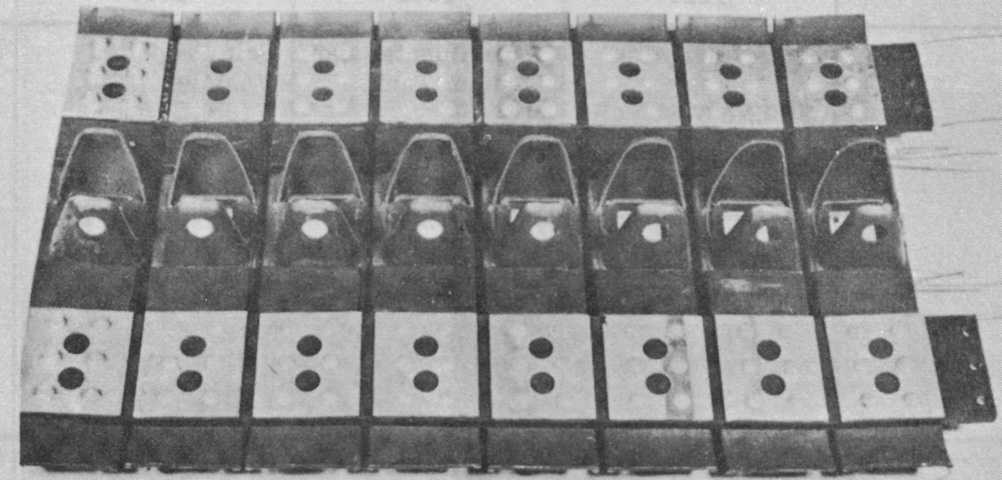
Amphibious Cargo Carrier M116 Husky.

The M116 Husky is seen with the cargo compartment uncovered. The winch is mounted centrally on the hull front above the spare track section, and the track shroud design enhanced the tracks' propulsive and steering efficiency when afloat. The fuel filler is visible under the rear corner of the cab cover, and the fuel tank fed the engine installed just behind the cab. Access to the cab was via gullwing-style doors hinged at the roof. (Picture from TM 9-500 C3 Data Sheets for Ordnance Type Materiel.)

A section of the band-type track is laid out. Double center guides were used, and the drive sprocket engaged the center of the track. The 1¼"- (3.18cm-) tall grousers were steel, and enclosed replaceable rubber pads with a contact area of 10.40in² (67.10cm²). Each section weighed 62.7lb (28.4kg). (Picture from Track Data.)

This vehicle has a cover installed over the cargo compartment, and a folding access hatch is visible on its roof. The upward-opening nature of the cab cover access hatches can also be gleaned from the drawing; the engine air intake grille is visible at the rear of the cab cover between the entrance hatches. The M116A1 was developed as an unarmored version of the amphibious armor cargo carrier M733, and the M116A1 designation was applied for clarity since the M733 had been developed to be an armored version of the M116. (Picture from TM 43-0001-31 Equipment Data Sheets for TACOM Combat and Tactical Equipment: Equipment Class 1450, 2310, 2320, 2330, 2350.)